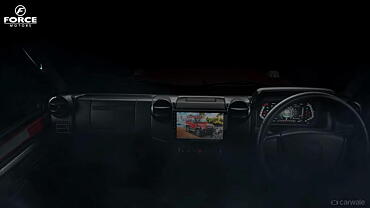INTRODUCTION TO AUTOMOBILE REPAIR WORKSHOPS
In our auto guide article section, we have included articles related to tips for maintenance, getting better mileage, and so on. As a customer when we visit a service station, we often wonder as to what tools they might be using, are they following a required procedure? And so on. We solely depend upon trust factor that our vehicles are in safe hands. Knowledge and awareness is the key. We will be publishing a series of articles covering everything about car service stations, with an intention of providing a real-time information about the workings at a service station. The guide starts from tools and equipment, to trouble shooting, and so on. .

Tools and Equipment
A good automobile shop must have all the equipment that is needed before undertaking the responsibility of finding faults in all vehicle types and servicing jobs. The required list of tools and equipment are listed as follows:
1.Screw drivers
2.Spanners, wrenches etc
3.Pliers
4.Hammers
5.Chisels
6.Files
7.Hacksaw
8.Drilling machine
9.Bench vice
10.Grinder
11.Measuring tools
12.Chain pulley block
13.Hydraulic jack and axle stands
14.Creeper
15.Lubrication equipment
16.Battery testing and charging equipment
17.Electric equipment
18. Hydraulic lift or service ramp
19. Tools for tyres
20. Tyre remover
21. Wheel balancing equipment
22. Brake testing
23. High pressure washing equipment
24. Engine analyzer
25. Hydraulic press
26. Piston ring compressor
27. Ring remover
28. Ring filing tool
29. Piston groove cleaner
30. Cylinder reboring machine
31. Cylinder honing machine
32. Valve refacing machine
33.Valve re seat grinding equipment
34.Chassis alignment equipment
35.Spark plug testing and cleaning equipment
36.Steering geometry and alignment gauges
37.Nozzle testing and cleaning equipment
38.Connecting rod alignment machine
39.Fuel injector tester
40.Center lathe
41.Fire extinguisher
42.Air compressor and pressure gauge
43. Workshop manuals. And so on
SCREW DRIVER
Screw drivers are important tools that are useful to remove/tighten different types of screws. The selection of screws depend upon material type, area to be joined, and tension requirement, etc. A wide variety of screws and drivers are available for your tasks. Screw drivers are basically classified as Straight head type, Phillips type, Offset type.
Phillips type screw drivers are widely used because they come with a better grip, this ensures that there are minimal chances of the driver slipping out from the screw slot. Offset screw drivers are useful for screws which are otherwise difficult to reach.
SPANNERS
Spanners are also called as wrenches. These are used for tightening bolts and nuts. Some of the common types are:
1.Open end spanners
2.Ring Spanners
3.Combination Spanners
4.Socket spanners
5.Torque wrench
6.Adjustable wrenches
7.Allen Wrenches
Open end spanners
These are the most commonly used spanners in garages. These spanners are not meant for complete tightening activity, they are good to be used in places that are difficult to be reached. Open end spanners are generally used post initial loosening of the bolt and nuts, they are later useful to tighten it up slightly. It is not recommended for loosening/tightening at high tensions. Any slippage would damage the sides of bolts and nuts, and could further complicate problems.
Ring Spanners
Ring spanners are also called as box spanners. The ends completely encircle bolt/nut head, thereby providing the best of grips to working on. The twelve-sided ring shape of this spanner provides a better grip at any position.
Combination Spanners
This type of spanner has a ring on one sided and the other side is left open. This helps in initial tightening using an open end spanner, and final tightening using a ring spanner.
Socket Spanner
This type of spanner is useful in restricted conditions where common type of spanners can not be used. The socket box consist of different sockets, socket extension rods, speed handle, etc and their sizes range from 10 to 32mm diameter. Ratchet is a special spanner with which a nut located in hard to reach places can be tightened easily. This spanner allows easy tightening and you can unbolt the nut when the handle is moved in a reverse direction.
Torque Wrenches
Most of the bolts and nuts in engine or specific part are needed to be tightened to exact specified torque setting. Else it could result in damage of vital parts or result in a dynamic imbalance. Torque wrenches are used to enable any average human to set-in same torque as specified for the bolt/nut. Here one can select the specified torque, and lock the key before tightening the nut. Once torque exceeds specified limit, it would brake the tightening effort indicated with a noise. This will assure the mechanic that the required tightening is done and he can move on to fix the next thing. This saves a lot of time which would have been lost in doubting whether correct tightening was done or not.
Adjustable Wrenches
This type of wrenches have an advantage, they allow a single tool to be used for a number of bolt sizes. Tightening of the sliding lock enables to adjustments of required bolt sizes. However the limitation of this type is that it can not be used for high torque work, as chances of loosing grip due to slipping of lock is present.
Allen Wrenches (Allen Keys)
Allen keys are used on Allen Screws which have hexagonal shaped grooves on their heads.
PLIERS
Plier is a tool for holding very small things, like that of a wire, a pin, twisting of a wire, etc. Wide types are available based on usage requirements. Some of examples are a Cutting plier, nose plier, and so on.
HAMMERS
Some of hammer types include Cross peen hammer, wooden hammer, ball peen hammer, etc. A medium weight ball peen hammer is most commonly used for automobile works. A forged steel hammer is used for hard surface work. Whereas, soft hammer is used for soft surfaces and denting work on sheet metal.
CHISELS
Chisels are meant for cutting metal with hammer. A common application is tearing open corroded nuts and bolts with a flat Chisel. Safety glasses must be used when working with Chisels.
FILES
Files are tools that are used for smoothening the rough surfaces and removing small amount of metal. The layers of the files will cut the metal layers and hence smoothen the same. Different types of files as used depending upon work. Rough files are used for initial work, and smooth files are used for fine finishing.
HACKSAWS
Hacksaws are meant for cutting metals by sawing. The blades are detachable and may have 14 to 32 teethes per 25mm of blade. The selection of size and strength of blades depends upon the thickness of metal and work.
DRILLING MACHINE
A drilling machine may be hand operated or an electrical one. A set twist drill, generally measuring 0.5MM to 6mm is sufficient for automobile work.
GRINDER
A Grinder is necessary to sharpen tools. Grinding should always be done over the face of a grinding wheel and not on its sides.
BENCH VICE
Bench vice holds the component while it is being worked upon. This is permanently fixed upon a work bench. It’s a very essential holding device as frequent repair/lubrication of strut assembly or steering assembly would be performed.
MEASURING TOOLS
Most familiar and frequently used tool is an ordinary steel ruler of 300MM long. However for special purpose such checking spark plug gap, diameter of a screw and nut, a special measuring tool such as feeler gauge, vernier caliper, micrometer, etc may be used.
Note: The above mentioned tools are essential for automobile works. Many more tools and equipment need to be readily available at work shop for a regular usage. We will discuss the same in the next article.



























